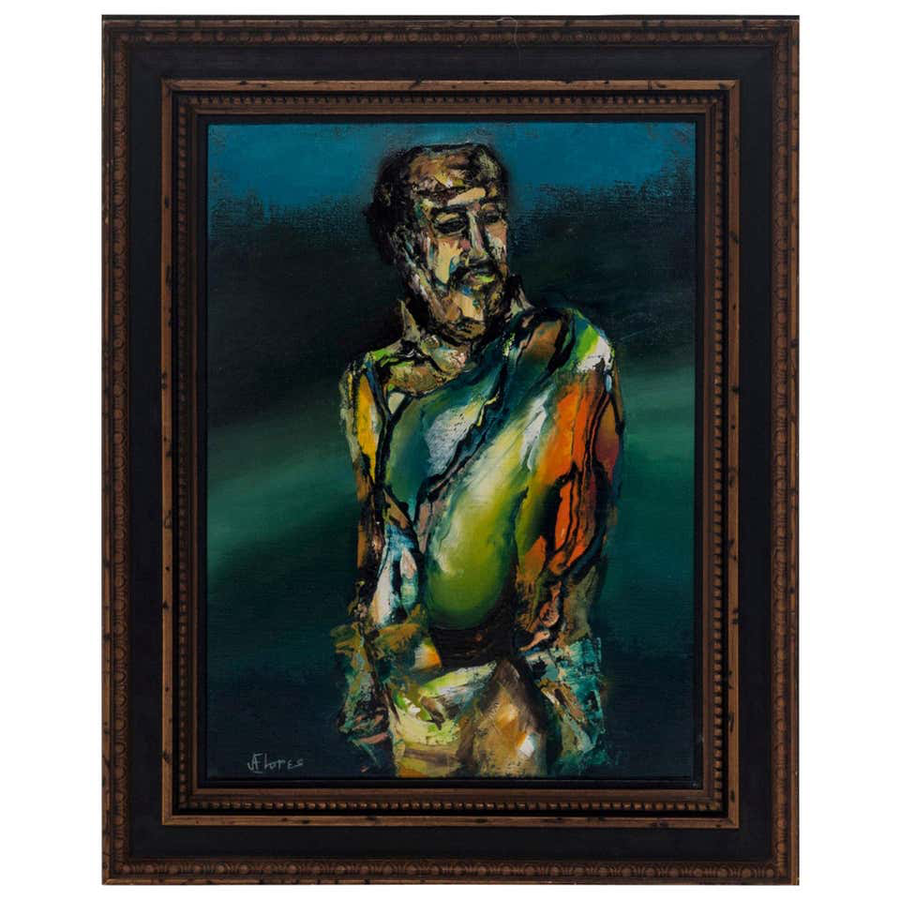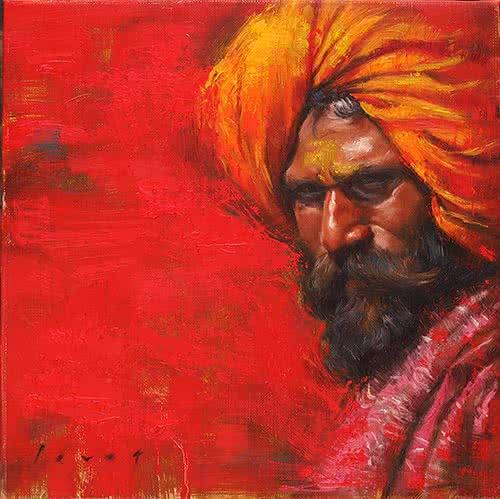Mastering Composition and Shade in Figurative Oil Painting
Mastering Composition and Shade in Figurative Oil Painting
Blog Article
The Advancement of Figurative Oil Painting: Comprehending Its Historical Importance and Modern Interpretations
The development of figurative oil paint offers as an engaging lens via which to check out the interplay in between creative expression and historic context. Contemporary artists, attracting from this abundant heritage, are currently reinterpreting the human number in ways that challenge conventional stories.
Beginnings of Figurative Oil Paint
The origins of figurative oil painting can be mapped back to the very early Renaissance in Europe, specifically in the 15th century. This duration marked a substantial departure from the rigid forms and level depictions particular of medieval art. Artists began to explore naturalism, stressing the human number and its emotional expression. The development of oil paint permitted higher depth of color and detail, boosting the realistic look and vibrancy of their job.

In this transformative era, figures were usually illustrated within contextually rich environments, showcasing not only their physical characteristics but additionally their emotional states. Pioneers such as Jan van Eyck and Titian utilized the medium's adaptability, employing layering strategies to attain luminosity and texture. This innovation helped with the portrayal of detailed materials and the nuances of skin tones, contributing to the growth of portraiture and narrative scenes.
Additionally, the Renaissance emphasis on humanism cultivated an appreciation for distinctiveness, which subsequently influenced musicians to create more relatable and dynamic figures - figurative oil painting. As a result, figurative oil painting emerged as a powerful automobile for storytelling and emotional involvement, laying the foundation for future creative activities and styles
Key Historic Movements
Substantial historical motions have shaped the evolution of metaphorical oil paint, each adding one-of-a-kind ideologies and strategies that increased the medium's possibilities. The Renaissance marked a turning point, emphasizing realism and the human kind, with musicians like Leonardo da Vinci and Michelangelo pushing the boundaries of anatomical accuracy and perspective. Following this, the Baroque period brought dramatic contrasts of light and shadow, exhibited by Caravaggio, that infused religious themes with intense emotionality.
The 19th century presented Romanticism and Realism, where musicians such as Delacroix and Courbet challenged classical ideals, concentrating on specific expression and everyday life. The advent of Impressionism better reinvented the medium by stressing the effects of light and color, bring about a departure from typical representation.
In the very early 20th century, movements like Expressionism and Cubism redefined figurative painting via abstraction and the exploration of psychological depth. Each of these movements not only reflected the societal adjustments of their times yet also laid the groundwork for contemporary analyses. The interaction in between these historical movements has developed an abundant tapestry of approaches and styles, influencing modern-day musicians in their pursuit of catching the human experience on canvas.
Methods and Materials Advancement

Throughout the Baroque period, techniques such as chiaroscuro and sfumato arised, enhancing the psychological resonance of metaphorical make-ups. Artists began to try out lusters and impasto, controling appearance and brightness. By the 19th century, advancements like making use of pre-mixed paints in tubes revolutionized availability, enabling musicians to repaint en plein air and record the short lived impacts of light.
The 20th century witnessed the intro of artificial pigments and tools, which broadened the scheme and changed the uniformity of oil paints. The exploration of brand-new application strategies, such as scheme blades and brushes of differing stiffness, additional varied imaginative expression. Jointly, these innovations reflect the evolving relationship between products, strategies, and the artistic vision intrinsic in metaphorical oil paint.

Contemporary Analyses
Contemporary analyses of metaphorical oil paint show a vibrant dialogue between custom and advancement, where artists challenge developed standards and check out diverse themes. This evolution manifests in various means, as modern musicians mix classic techniques with modern concepts, often addressing social, political, and individual stories.
Lots of professionals draw inspiration from historic jobs, yet they infuse their pieces with modern point of views, using the human form as a vehicle for discourse on culture, identification, and sex. Artists increasingly experiment with abstraction, distortion, and combined blog media, which allows for a more comprehensive analysis of the figure and its context.
Furthermore, the usage of vivid color schemes and unique structures typically offers to disrupt standard checking out experiences, prompting crucial engagement from audiences. This shift in emphasis extends past visual appeals; it mirrors an expanding understanding of the complexities of human experience in an interconnected world.
As metaphorical oil paint proceeds to evolve, it continues to be an essential medium for exploring the subtleties of modern life, embodying both a regard for heritage and a dedication to modern thought. The result is a rich tapestry of expression that resonates with the complexities of the modern-day human condition.
Effect on Modern Art
The impact of metaphorical oil paint on modern art is extensive, as it has actually consistently influenced a myriad of creative activities and practices throughout the 20th and 21st centuries. From Expressionism to Surrealism and past, the expedition of the human number has remained a central motif, enabling musicians to share complicated feelings and narratives. This emphasis on figurative representation has led to a re-examination of conventional methods, causing ingenious methods that mix realism with abstraction.
In addition, modern artists Your Domain Name have actually accepted metaphorical oil paint as a means to deal with social and political concerns, utilizing the medium to challenge assumptions of identification, society, and sex. The resurgence of interest in figurative operate in recent years mirrors a wishing for link in an increasingly electronic globe, where human experience and feeling are vital.
Furthermore, the dialogue between figurative oil paint and contemporary art appears in the works here of musicians such as Kehinde Wiley and Jenny Saville, who make use of historical referrals while instilling their pieces with modern importance. Inevitably, metaphorical oil paint continues to shape and redefine modern-day creative expression, highlighting its enduring relevance in the art world.
Final Thought
The advancement of metaphorical oil paint emphasizes its historical relevance and flexibility across different imaginative movements. Inevitably, figurative oil paint stays a vital tool for discovering the human experience, resonating greatly in today's digital landscape.
The evolution of figurative oil painting offers as an engaging lens with which to take a look at the interplay in between imaginative expression and historical context.Considerable historical motions have shaped the advancement of metaphorical oil paint, each contributing one-of-a-kind approaches and methods that increased the tool's possibilities.As historic movements formed the trajectory of metaphorical oil paint, the products and methods utilized by artists have likewise gone through considerable makeovers. figurative oil painting.The impact of metaphorical oil painting on modern art is profound, as it has actually consistently inspired a myriad of artistic movements and methods throughout the 21st and 20th centuries.The advancement of metaphorical oil painting underscores its historical significance and flexibility throughout different imaginative motions
Report this page